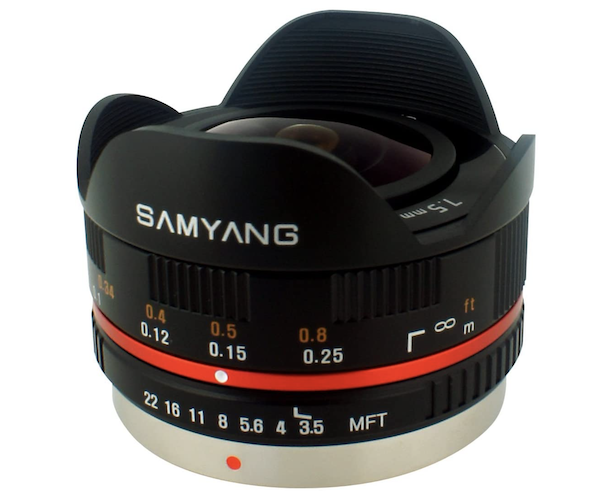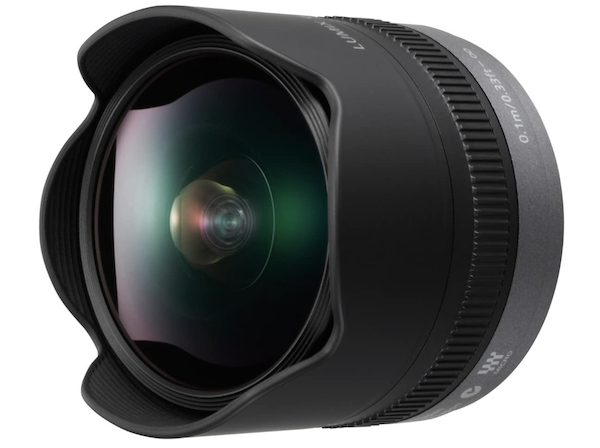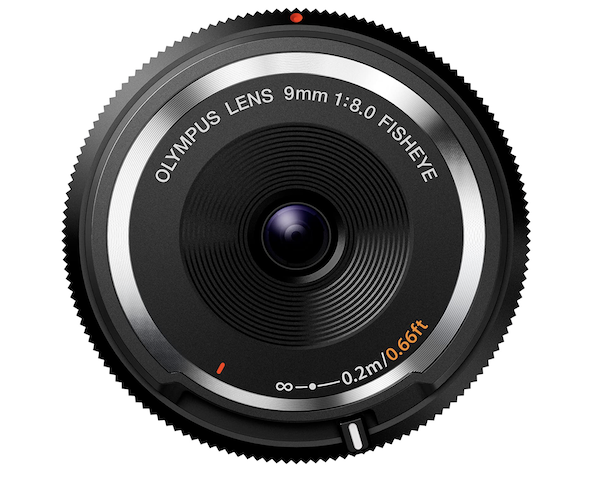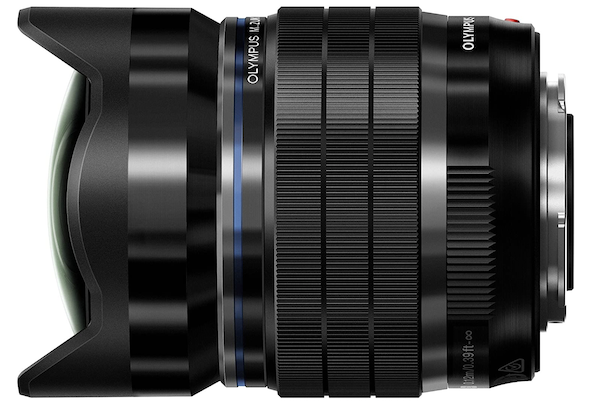Fisheye lenses are an excellent tool when you want to get every part of the scene into the frame and allow for creative freedom that you can’t get with other lenses or even the human eye, for that matter.
are an excellent tool when you want to get every part of the scene into the frame and allow for creative freedom that you can’t get with other lenses or even the human eye, for that matter.
An image taken with a fisheye lens is not set in stone, as you have options to remove much of the fisheye effect with a little post-processing work.
If curvy isn’t the look you’re going for, you can remove its effect through your photo editor. Photoshop makes it straightforward, but it’s also possible in other graphics editors.
Types of Fisheye Lens
Fisheye lenses come in two different basic types determined by how they render the image in the frame.
A circular fisheye lens renders a circle in the center of the frame, while a full-frame/diagonal fisheye will use the full area of the image sensor and extend the image out 180 degrees to all four corners.
Best Fisheye Lenses for M43 Cameras and Every Budget
If you’re considering advancing your photography skills with your micro four-thirds camera , then a 4/3 fisheye lens could help you pursue exciting challenges. Here are a few of the best micro 4/3 fisheye lenses
, then a 4/3 fisheye lens could help you pursue exciting challenges. Here are a few of the best micro 4/3 fisheye lenses in 2020 that will help you do that.
in 2020 that will help you do that.
Samyang 7.5mm f/3.5
This Samyang fisheye is a superb choice for your first lens. It’s very affordable, has a solid build quality, and is super easy to use, especially manual focusing.
It’s hard to believe the quality of images you can achieve for such a cheap fisheye lens. It’s also capable of a reasonably decent minimum focusing distance for some nicely framed close-ups.
Features:
- 180 degrees wide-angle view
- Full frame image
- Nine elements in 7 groups
- An aperture range of f3.5 to f2.2
- minimum focusing distance of 3.5″ (0.09m)
- Weight: 197g
- Length 48mm
- Diameter 60mm
Lumix G 8mm f/3.5
The Lumix G is the first fisheye lens made available for the micro four-thirds category and is relatively expensive if this is your first foray.
and is relatively expensive if this is your first foray.
If you don’t need autofocus, then you might be better off with a cheaper option, but AF is hard to pass up when your photographing subjects that won’t sit still, as you’ll know if you’ve ever tried to photograph pets.
The lens features a much smaller minimum focusing distance than the cheaper models, so you will need to keep that in mind.
At the time of its release, Panasonic claimed it as the lightest and smallest lens of its type, which might still be true if you don’t count the Olympus 9mm f/8 listed below as a true lens.
An ED lens keeps chromatic aberration to a minimum with stable performance from close-up to infinity. Multi-coated lens elements help minimize ghosting and flare for great optical performance that will keep most micro four-thirds fisheye lens enthusiasts happy.
fisheye lens enthusiasts happy.
Features:
- 180 degrees wide-angle field of view
- f3.5 to f2.2
- Weight approximately 165g
- Full-frame image
- Focusing distance of 0.1mm to infinity
- Seven blade aperture for a rounded shape
Olympus 9mm f/8
This fisheye lens is Olympus’s second attempt at an affordable pancake body lens. The image quality is reasonable, but you don’t get as wide an image format as the other lenses. Understandable that the lens isn’t much more than a cap with a small wide-angle lens built-in.
It lacks just about every feature you would expect, including an AF mechanism and electrical contacts. That last point means your camera won’t receive any EXIF data from the lens.
Olympus doesn’t even list this one as a lens on their website. The official Olympus website lists it in the accessories section [*https://asia.olympus-imaging.com/product/dslr/mlens/bcl0980/index.html].
Is this lens a somewhat expensive body cap, or is it a modestly priced fisheye lens? One way to look at it is as an enhanced body cap that gives you options for having a bit of fun during your shoots when the mood strikes.
If you use it as a body cap, at least it won’t take up any room or add any extra weight worth speaking about.
Features:
- A very compact lens that’s great as a lightweight option
- Full frame image
- Five elements in 4 groups, with 2 aspherical elements.
- 140-degree field-of-view
- Can also function as a body cap
Olympus M.Zuiko ED 8mm f/1.8 PRO
The M.Zuiko ED 8mm is a fisheye for professionals that includes weatherproofing (if mounted on a similarly protected body), but it’s reasonably priced for the professional moniker.
At 315 grams, 80mm long, and 60mm in diameter, the lens is a hefty beast, but you do get a lens capable of f/1.8, so it’s probably a reasonable tradeoff for most photographers.
Electrical contacts create a communication channel between the lens and the camera to get all of your essential EXIF data. Even at this price range, you don’t get image stabilization as that is handled in-body on the camera, but you do get autofocus.
Features:
- 17 elements in 15 groups for reduced aberrations
- 180-degree angle of view
- Silent autofocus
- Minimum focal distance 8mm
Take Your Pick of Fisheye Lenses for Micro Four-Thirds
If you demand exceptional results, or you’re a professional photographer, then your choice is clear; it’s the Olympus M.Zuiko ED 8mm f/1.8 PRO all the way.
For the rest, you will get pleasing optical performance from the Samyang 7.5mm f/3.5, so you can’t go wrong at these prices. The Samyang is a lot cheaper, but the lack of AF may be a deal-breaker for many photographers.
If you’re not too serious about fisheye photography and don’t have much money to spend but still want to dabble, then the Olympus 9mm f/8 is a good choice.
It’s an accessory that’s clearly aimed at the enthusiast level of the market. Even so, the image quality will still impress when it’s paired with the right camera.
when it’s paired with the right camera.
Photography provides many different challenges for aspiring photographers looking to improve their skillset. If you’ve been wondering what to try next, then it might be time to jump in and try your hand at fisheye photography.
their skillset. If you’ve been wondering what to try next, then it might be time to jump in and try your hand at fisheye photography.
With micro four-thirds manufacturers like Panasonic, Olympus, and other brands continuing to support the micro four-thirds range, it’s great to see that they are also coming to the party by developing the best fisheye lenses for micro four thirds.
like Panasonic, Olympus, and other brands continuing to support the micro four-thirds range, it’s great to see that they are also coming to the party by developing the best fisheye lenses for micro four thirds.
Whether you’re serious about fisheye photography or having fun, there is now a range of prices to suit all types of budgets and skill levels.






